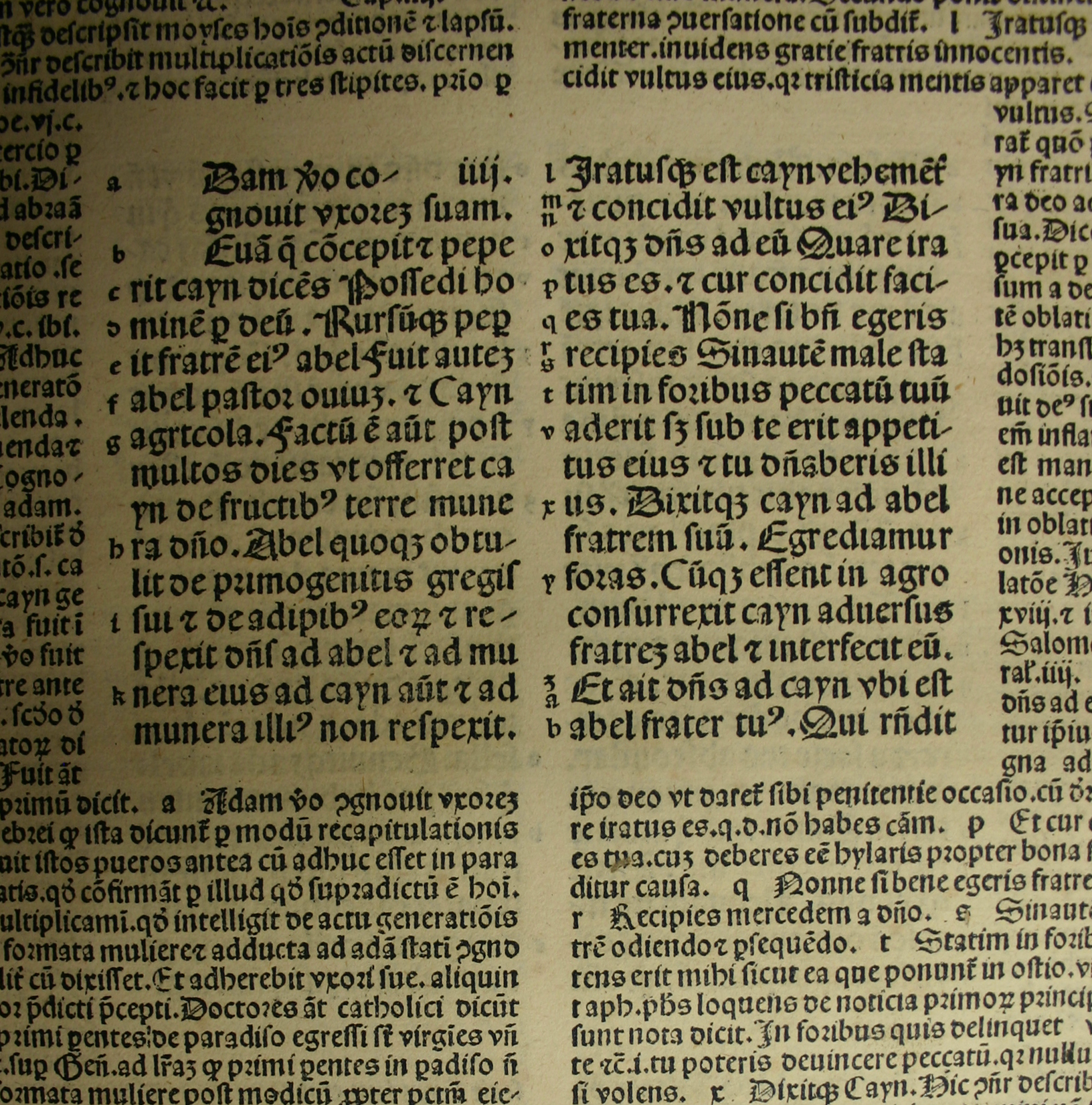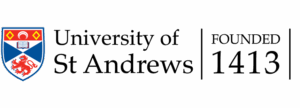
This week’s binding feature is one of four incunabula held in the George Hay Forbes Collection. This week, as I was wrapping up cataloguing of all the known incunabula from the smaller collections held in the department (the majority are held in the Typographical Collection), I came to pull this item off the shelf I was stunned! GHF34.h(2) is a four volume set of the Latin Vulgate Bible, printed in 1493 in Nuremberg by Anton Koberger’s shop, featuring the commentary of Nicholas de Lyra, Pablo de Santa Maria (Bishop of Burgos), Mathias Döring and Guillelmus Brito.

It is assumed that this set was assembled by George Hay Forbes, as three volumes have been bound uniformly (vols 1,2 & 4) and one (v. 3) has a completely different binding and provenance marks. Volumes 1,2 and 4 of this set have been half bound in alum tawed pigskin and fragments of a 13th or 14th century Latin manuscript over boards. The pigskin segments have been decorated with blind vegetal rolls featuring two figures facing each other and with heavily blind stamped floral decorations. The manuscript fragments used on each volume are cut from the same two-column manuscript and appear to be a Biblical commentary (Acts 6 is quoted on the verso of v. 1). This is a very interesting decorative style, as most manuscript bindings appear to be a temporary or waste binding, the binder of these works seems to have taken into account the aesthetically pleasing nature (and the content) of the manuscript in hand and created a binding that shows this manuscript off.


The provenance of all of these three volumes is of interest as well. Each volume bears the institutional inscription on each title page: “Conventus Kircheimensis Ffrm. Praedm.” It is assumed that this is the Cistercian Convent at Kirchheim am Ries (or Zisterzienserkloster Kirchheim am Ries), but suggestions are welcome. This inscription also appears on several volumes of the 1498 Amerbach/Koberger 1498-1502 Latin Vulgate Bible also found in Forbes’s collection. This is interesting in regards to the binding as well, as we have a 15th century Biblical commentary bound in what could be an out-of-date manuscript version, either bound or bought by a Cistercian order. Volume 3, which is not featured here but has its own wonderful binding, also has a German monastic inscription from the Benedictine Abbey at Weingarten (or Benediktinerabtei Weingarten). These books were collected by Forbes in the 19th century, after his death his library passed to the trusteeship of the Episcopal Church of Scotland and moved to Edinburgh in 1882. In 1969 the trustees approached the University of St Andrews in 1969 for placing the library on permanent loan and in 1984 the collection was purchased outright and became the property of St Andrews University Library.
–DG
Discover more from University Collections blog
Subscribe to get the latest posts sent to your email.


Fragment you show is from a fourteenth-century Lectionary, containing the readings for St Stephen’s Day. Fabulous!
Thanks Elaine! Indeed St Stephen’s name is mentioned on all the other fragments as well, so I assume these were probably sequential leaves. I’ll update the catalogue record now to reflect this new info!
Reblogged this on JANINEVEAZUE.
This is absolutely stunning!!
“Conventus Kircheimensis Ffrm. Praedm.” rather refers to Dominikanerinnenkloster Kirchheim unter Teck (O.P., Baden-Württemberg)
many thanks! We’ll update the catalogue record to reflect this.